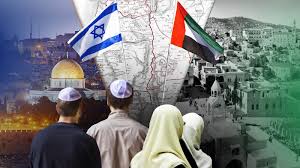The Real Cause Of Israel And Palestinian War

The Israel-Palestinian conflict is a complex and multifaceted issue with deep historical, political, religious, and territorial roots. It is challenging to pinpoint a single cause, as the conflict has evolved over time and involves various factors. However, some key factors contributing to the conflict include:
Historical Disputes:
The region has a long history of overlapping claims and conflicts between Jewish and Palestinian populations, dating back to the late 19th and early 20th centuries during the period of British rule in Palestine.
Territorial Disputes:
The conflict revolves around competing claims to land, particularly regarding borders, settlements, and the status of Jerusalem. Both Israelis and Palestinians claim historical and religious ties to the land, leading to territorial disputes and competing narratives.
Nationalism and Identity:
Nationalistic sentiments and identity play a significant role in the conflict, with both Israelis and Palestinians asserting their right to self-determination and statehood.
Religious Significance:
The region holds immense religious significance for Jews, Christians, and Muslims, particularly Jerusalem, which is a holy city for all three Abrahamic religions. Control and access to religious sites are contentious issues.
Refugee Crisis
The displacement of Palestinian refugees following the establishment of Israel in 1948, known as the Nakba (catastrophe), and subsequent conflicts has created a refugee crisis and contributed to ongoing tensions.
Security Concerns:
Security threats, including terrorism and violence, have led to military responses and security measures from both sides, further escalating tensions.
International Involvement:
The involvement of regional and international actors, including neighboring Arab states, major powers like the United States, and international organizations, has shaped the dynamics of the conflict and efforts towards resolution.
Certainly, let’s expand on the elaboration with specific documentations, events, and dates related to the Israel-Palestinian conflict:
1. Settlement Expansion and Land Disputes:
– Documented instances of Israeli settlement expansion in the West Bank include the establishment of settlements like Ma’ale Adumim in 1975 and Ariel in 1978. These settlements have grown over the years, leading to displacement and restrictions on Palestinian land and movement.
– The Oslo Accords in the 1990s aimed to address territorial issues, but settlement construction continued, with significant increases in population and infrastructure in settlements like Modi’in Illit and Beitar Illit in the early 2000s.
2. Blockade and Humanitarian Crisis in Gaza:
– The Israeli blockade of Gaza intensified after Hamas took control in 2007. Documented incidents include the blockade’s impact on access to essential goods, such as the restriction of imports of construction materials, medical supplies, and fuel.
– Humanitarian organizations like the United Nations Relief and Works Agency for Palestine Refugees in the Near East (UNRWA) and Amnesty International have documented the humanitarian crisis in Gaza, including electricity shortages, unemployment, poverty, and limited access to healthcare.
3. Jerusalem and Religious Sites:
– Tensions over Jerusalem’s status and religious sites have led to documented clashes and escalations, such as the Second Intifada (2000-2005) triggered by a visit of Ariel Sharon to the Temple Mount/Haram al-Sharif compound.
– International organizations like UNESCO have documented concerns over threats to the cultural heritage and religious significance of sites in Jerusalem, including the Old City and its historic walls, due to ongoing conflicts and development projects.
4. Right of Return and Refugees:
– The Palestinian demand for the right of return is rooted in UN General Assembly Resolution 194 (1948), which calls for the return of Palestinian refugees to their homes and compensation for those choosing not to return.
– The United Nations Relief and Works Agency for Palestine Refugees in the Near East (UNRWA) documents the status and conditions of Palestinian refugees, including their displacement, living conditions in refugee camps, and access to education and healthcare.
5. Internal Palestinian Dynamics:
– The political division between Fatah and Hamas escalated in 2007, leading to documented clashes and conflicts, such as the Battle of Gaza in which Hamas took control of the Gaza Strip.
– Reports from human rights organizations like Human Rights Watch and Amnesty International document governance challenges, corruption allegations, and human rights abuses by both Palestinian factions, impacting the rights and freedoms of Palestinians.
6. International Law and Diplomatic Stances:
– International legal frameworks, including United Nations Security Council resolutions such as Resolution 242 (1967) and Resolution 338 (1973), outline principles for a peaceful settlement of the conflict, including withdrawal of Israeli forces from occupied territories and recognition of Palestinian rights.
– Diplomatic efforts, such as the Madrid Conference (1991), the Oslo Accords (1993-1995), and the Camp David Summit (2000), have documented attempts to negotiate a two-state solution, but challenges remain in implementing agreements and resolving core issues.
It’s essential to approach discussions about the Israel-Palestinian conflict with nuance and sensitivity, considering the complexities and multiple perspectives involved. Efforts towards peace and resolution often require addressing historical grievances, negotiating territorial issues, promoting dialogue, and fostering mutual understanding and respect.



